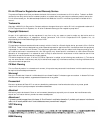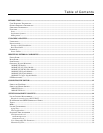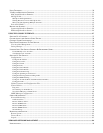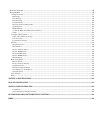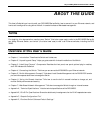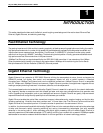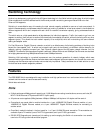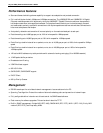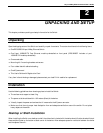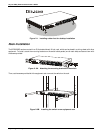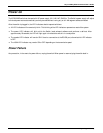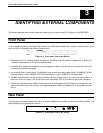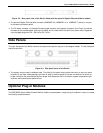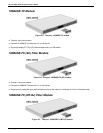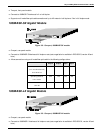
24-port NWay Ethernet Switch User’s Guide
Introduction 3
Performance features
♦ Store and forward switching scheme capability to support rate adaptation and protocol conversion.
♦ Full- and half-duplex for both 10Mbps and 100Mbps connections. The 1000BASE-SX and 1000BASE-LX Gigabit
Ethernet modules operate at full duplex only while the 1000BASE-T Gigabit Ethernet module can also operate in
half-duplex mode when auto negotiate is selected. Full duplex allows the switch port to simultaneously transmit
and receive data, and only works with connections to full-duplex capable end stations and switches. Connections to
hubs must take place at half duplex.
♦ Auto-polarity detection and correction of incorrect polarity on the receive twisted-pair at each port.
♦ Data forwarding rate 14,880 pps per port at 100% of wire-speed for 10Mbps speed.
♦ Data forwarding rate 148,800 pps per port at 100% of wire-speed for 100Mbps speed.
♦ Data filtering rate eliminates all error packets, runts, etc. at 14,880 pps per port at 100% of wire-speed for 10Mbps
speed.
♦ Data filtering rate eliminates all error packets, runts, etc. at 148,800 pps per port at 100% of wire-speed for
100Mbps speed.
♦ 12K active MAC address entry table per device with automatic learning and aging (10 to 1000000 seconds).
♦ 12 MB packet buffer per device.
♦ Broadcast storm filtering.
♦ IGMP Multicast support.
♦ 802.1Q VLANs.
♦ GARP/GVRP, GARP/GMRP support.
♦ DHCP Client.
♦ 802.1p Priority Queues.
Management
♦ RS-232 console port for out-of-band network management via a console terminal or PC.
♦ Spanning Tree Algorithm Protocol for creation of alternative backup paths and prevention of network loops.
♦ Fully configurable either in-band or out-of-band control via SNMP-based software.
♦ Flash memory for software upgrades. This can be done in-band via TFTP.
♦ Built-in SNMP management: Bridge MIB (RFC 1493), RMON MIB (RFC 1757), MIB-II (RFC 1213), Entity MIB
version 2 (RFC 2737), and Proprietary MIBs.



